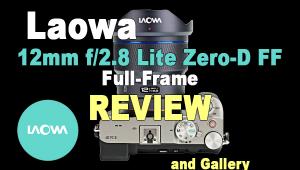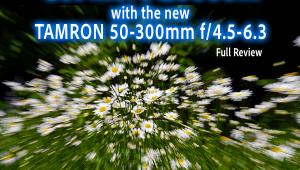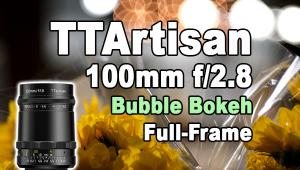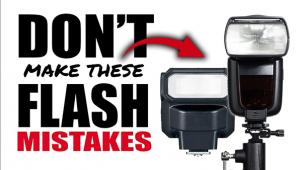Tamron SP 35mm F/1.4 Di USD Lens Review


This year marks the 40th anniversary of Tamron’s SP (Superior Performance) lens series. They elected to commemorate this special occasion by introducing what they have labeled “the ultimate Tamron lens” in the form of the new SP Tamron 35mm F/1.4 Di USD (Model F045) prime lens in Canon EF and Nikon F mounts.
The advance promotion and performance claims for this new Tamron 35mm F/1.4 lens have been prodigious, so we requested a sample to test by our own standards. We explore the question: just exactly how good is Tamron’s best lens ever?
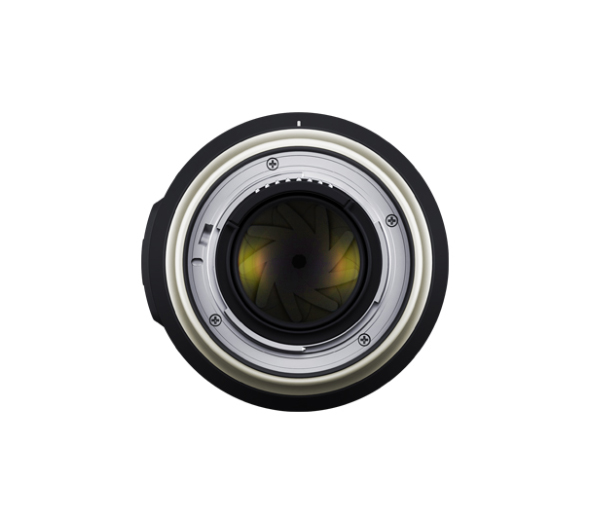 “Go make the best lens possible.” It seems that those were the instructions given to Tamron’s design team. According to their top brass, “Tamron’s optical design staff was given a single instruction from product planning: aim for the absolute ultimate in lens performance.”
“Go make the best lens possible.” It seems that those were the instructions given to Tamron’s design team. According to their top brass, “Tamron’s optical design staff was given a single instruction from product planning: aim for the absolute ultimate in lens performance.”
Now, if that doesn’t make your heart beat faster, hang up and dial 911. Having used and reviewed the Tamron 35mm f/1.8 with great satisfaction back in 2015 (read the review here) I was anxious to get my camera attached to a sample of the new f1/.4 lens.
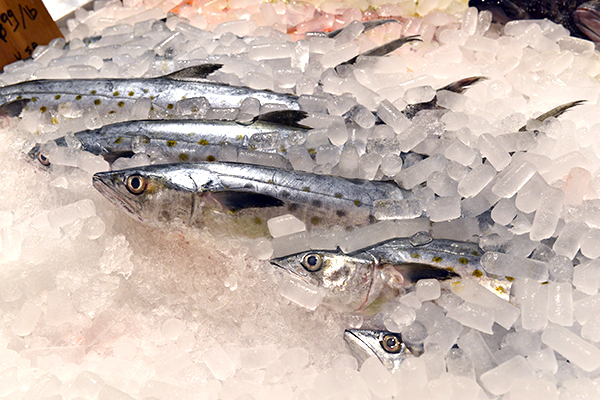
Specifications
Designed for full-frame SLR cameras, the new Tamron 35mm F/1.4 is equally suitable for crop-frame models where the focal length equivalent grows to around 55mm depending on camera brand. Maximum aperture is f/1.4 and it focuses to less than one foot.
In the specifications chart below, note the compact size—it’s only about four inches long. Compatibility with mirrorless models from Canon and Nikon is assured if the camera manufacturer’s adapter is used. Finally, like all Tamron lenses, the 35mm F/1.4 is protected by a 6-year USA Limited Warranty.

Optional Accessories
The Tamron TAP-in Console connects a Tamron lens to a PC via USB and allows the user to update firmware and adjust certain parameters in compatible units.
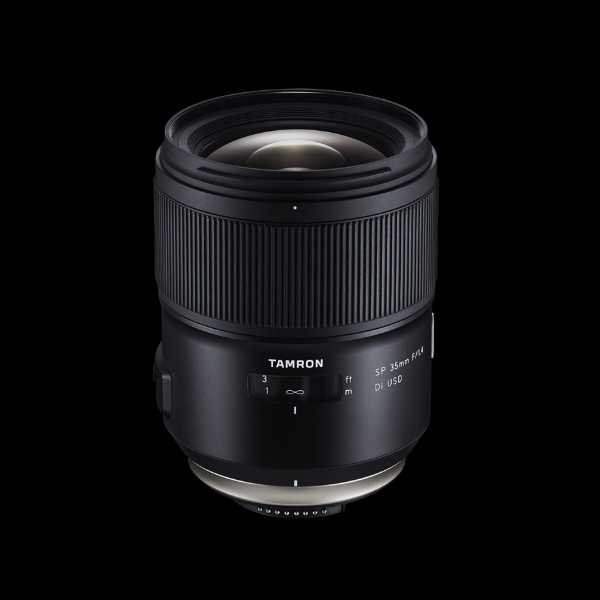
Construction
Overall, the Tamron 35mm F/1.4 lens is solidly built and nicely balanced. The focusing ring is textured with grippy parallel ridges and yes, if you want to tweak the focus, the new 35mm f/1.4 offers on-the-fly manual focus override of the AF. The unit measures a hair more than 4 x 3 inches (without the included locking lens hood, of course) and feels surprisingly luxurious in the hand.
She’s not a lightweight by any measure, but not burdensome either. With eyes open or closed, the lens feels as well-built as any lens I’ve ever handled, and that huge group includes offerings from virtually every manufacturer anywhere.
There’s a small metal emblem approximately 1 x .05 cm on the Tamron 35mm F/1.4's lens barrel that’s engraved simply “SP” and a matte-finished, soft-colored gold ring just above the lens mount. These are marks of distinction that identify the new generation of Tamron SP lenses. All in all, the design resembles one of the sections of a NASA rocket—sleek, smooth and modern.
 The optical formula features 14 elements in 10 groups and includes four LD (Low Dispersion) and three GM (Glass Molded Aspherical) elements. The design is optimized to keep any and all aberrations below the perceptible threshold.
The optical formula features 14 elements in 10 groups and includes four LD (Low Dispersion) and three GM (Glass Molded Aspherical) elements. The design is optimized to keep any and all aberrations below the perceptible threshold.
Based on my experience in the field with this lens, Tamron’s flaw-fighting optimization was a complete success. That’s a long about way of saying, “This lens rocks!” but we’ll get to that in a moment.
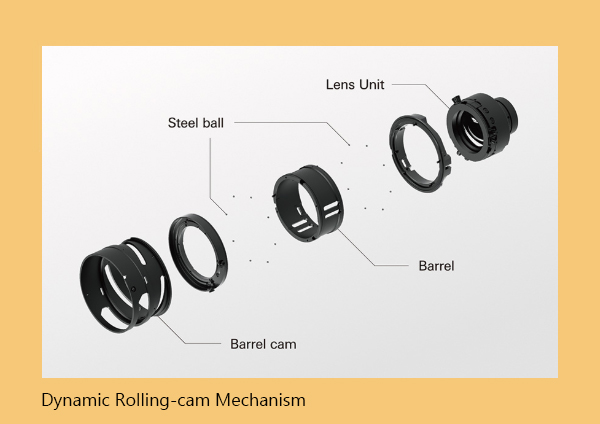
Because the 35mm F/1.4 has the largest Focus Element of any Tamron lens, their engineers invented an all-new cam mechanism to provide fast and smooth performance using a USD (Ultra Sonic Drive) motor. This new, significant component has been named Dynamic Rolling-cam.
For protection against harsh environments, the Tamron 35mm F/1.4 is moisture resistant. Special rubber seals protect against dust and drip infiltration. Additionally, the front element is coated with a durable Fluorine compound that protects the lens surface and has excellent water and oil repellency. The Fluorine shield makes it very easy to wipe away fingerprints and dust.
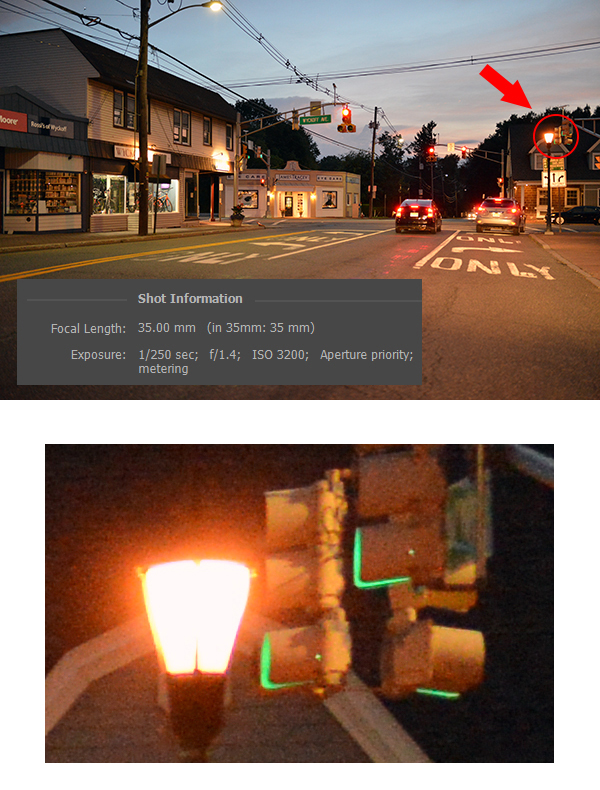 The remaining lens elements are treated with all-new BBAR-G2 coating, the latest generation of Tamron’s proprietary Broad Band Anti-Reflection coating. The new formulation is designed to suppress internal reflections and produce a full contrast image with minimal ghosting or flare.
The remaining lens elements are treated with all-new BBAR-G2 coating, the latest generation of Tamron’s proprietary Broad Band Anti-Reflection coating. The new formulation is designed to suppress internal reflections and produce a full contrast image with minimal ghosting or flare.
For the record, I shot in some potentially flare-rich situations and did not experience any problems. I also suspect that the BBAR-G2 coating played a role in improving the image of the traffic light which I detail below in an 800 percent blowup of life size.

The Tamron 35mm F/1.4 prime lens has a circular, 9-blade aperture diaphragm that creates attractive, rounded bokeh without the annoying multi-sided polygons that sometimes appear in photos taken with ordinary lenses.
Oh—and one small thing you’re sure to appreciate (I did)—the flower petal lens hood locks into the correct position and is set free by a button press.
Benefits of Specifications
As my friends have heard me say at least twice, you can’t snap a picture with an MTF chart. In other words, great specifications are only great if they deliver great benefits.
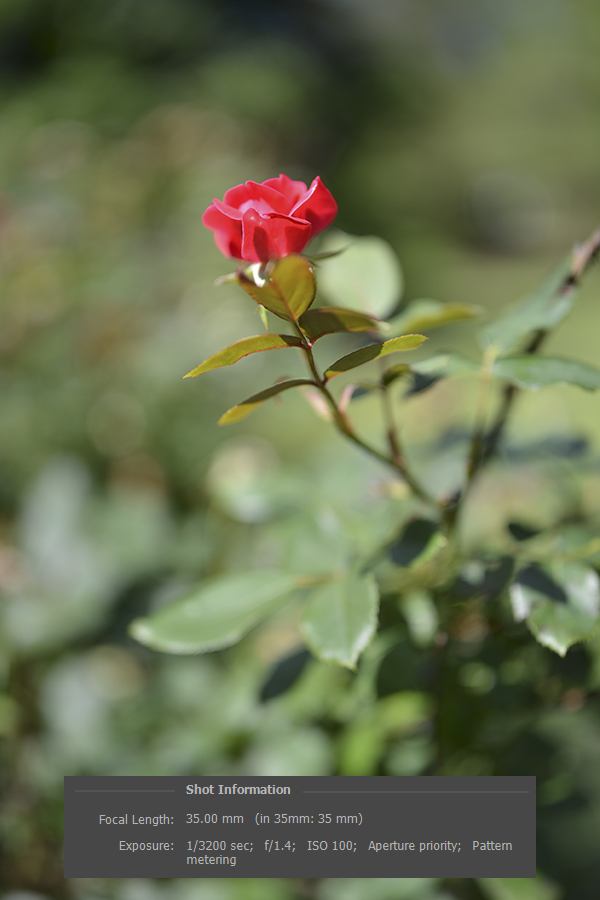
The optical design of the Tamron 35mm F/1.4, combined with the 9-blade rounded diaphragm, produces outstanding bokeh. The bokeh is soft and unobtrusive, but more importantly applies to out-of-focus objects in front of as well as behind the primary subject.
This is significant, because many lenses produce decent bokeh but only for things behind the subject. Since the aperture is f/1.4, you can limit depth-of-field significantly by shooting wide open, thereby enhancing the bokeh even more.
Tamron’s success eliminating optical aberrations (or at least diminishing them to a level below the visible threshold so they do not affect the image) is very obvious when you examine point sources of light, especially those near the edges of the image. Comatic aberration, also called coma, distorts such off-axis point sources (tiny dots) of light so that they look like a dripping ice cream cone—or a comet with a tail, if you prefer the low-fat simile.
If you take a close look at the 800% crop of the traffic light you can easily see how clean and sharp it is. I intentionally positioned it at the edge of the frame, near the corner of the image, to exaggerate the defect—except there is no defect.
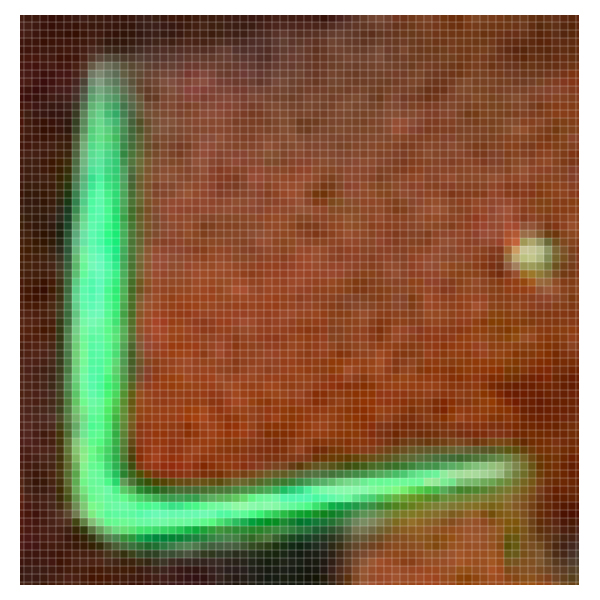
The Focus Element (that is, the element that moves to bring an image into focus) in the Tamron 35mm F/1.4 is the largest they’ve ever deployed, so they created an entirely new way to move it. Dubbed the Dynamic Rolling-cam, this new mechanism delivers very reliable, fast and accurate autofocus.

Benefits of F/1.4
We all know, or think we know, that an f/1.4 lens is better than an f/1.8 because it is faster. But many people do not understand all of the benefits of this larger aperture. The faster f/1.4 passes more light through to the image sensor, that’s a given. What are the advantages of that?
• Slightly better performance in dimly lit situations.
• Slightly brighter viewfinder for easier composition and focus.
• Less depth-of-field wide open (i.e., at f/1.4) for creative effects.
• Allows use of slightly higher shutter speed to freeze subject motion.
• Allows use of lower camera ISO setting for less grain, better contrast.
Although there is only a small difference between the numbers 1.4 and 1.8, the real difference becomes clear when we measure the areas of the physical apertures those numbers represent. To wit, the area of the aperture opening of an f/1.4 35mm lens is 490.87 mm² compared to the area of the aperture opening of a 35mm f/1.8 which is 296.95 square millimeters.
Remember that an f/stop is equal to the lens’s focal length divided by the lens’s aperture diameter. Using a bit of algebra we created this table by way of explanation.
 So if someone tells you there’s not much difference between and f/1.8 and an f/1.4, tell them to check their math.
So if someone tells you there’s not much difference between and f/1.8 and an f/1.4, tell them to check their math.

Performance Summary
This lens, the Tamron SP 35mm F/1.4 Di USD, is everything Tamron says it is and more. It definitely deserves to be the keystone product issued to celebrate the 40th anniversary of the Tamron SP lens line.
Sharpness and acuteness are incredible in the center, edge-to-edge and at the corners. Colors are rich and faithful to the source, and in so-called potential problem areas, where an average lens might render comatic (ice cream cone) or chromatic (purple fringe) aberrations, the Tamron 35mm F/1.4 delivers clean, sharp images.

I did not observe any barrel or pincushion distortion while conducting tests or during real-life shooting sessions. I photographed a long greenhouse from the inside, and the glass panel windows align perfectly without warping or bending even slightly. I also took several architectural shots of a vintage Dairy Queen restaurant and had no problems with perspective or deformation of parallel lines. To be sure, one does not expect to find significant distortion in a high quality 35mm lens, but I wanted to confirm just the same.

In terms of functionality, the Tamron 35mm F/1.4 is abundantly useful. I’ll be accused of being biased here, but I really like the 35mm focal length in general. When I shot mainly with a Leica M4, I most often used a 35mm f/2 Summicron lens. Even now I often find myself favoring this focal length because, in my opinion, it delivers perspective and angle of view closer to human vision than a 50mm. At any rate, it looks more natural to me.
For the record, the mathematical “normal” focal length for a 35mm-film-size target is about 43.27 mm. That’s the approximate diagonal of a 24 x 36 mm frame of film, according to Pythagoras.

Conclusion
Just exactly how good is Tamron’s best lens ever? I predict that the Tamron SP 35mm F/1.4 Di USD is destined to become a benchmark lens that other glass is measured by. That is the highest accolade I can pronounce on any product.
Price and Availability
Shipping now in Canon EF and Nikon F mounts, the Tamron SP 35mm F/1.4 Di USD has been seen priced at $899 at major retailers. The lens is compatible with Canon R and Nikon Z mirrorless cameras with full functionality if and only if the camera manufacturer's genuine adapter is used.
—Jon Sienkiewicz
